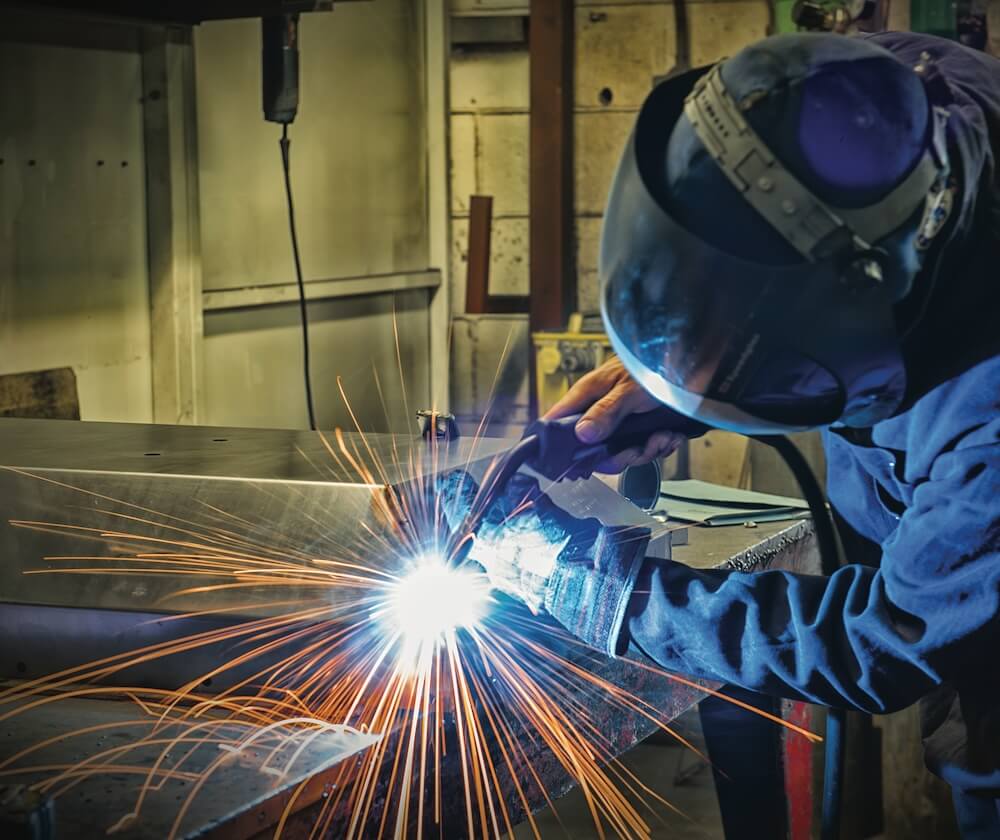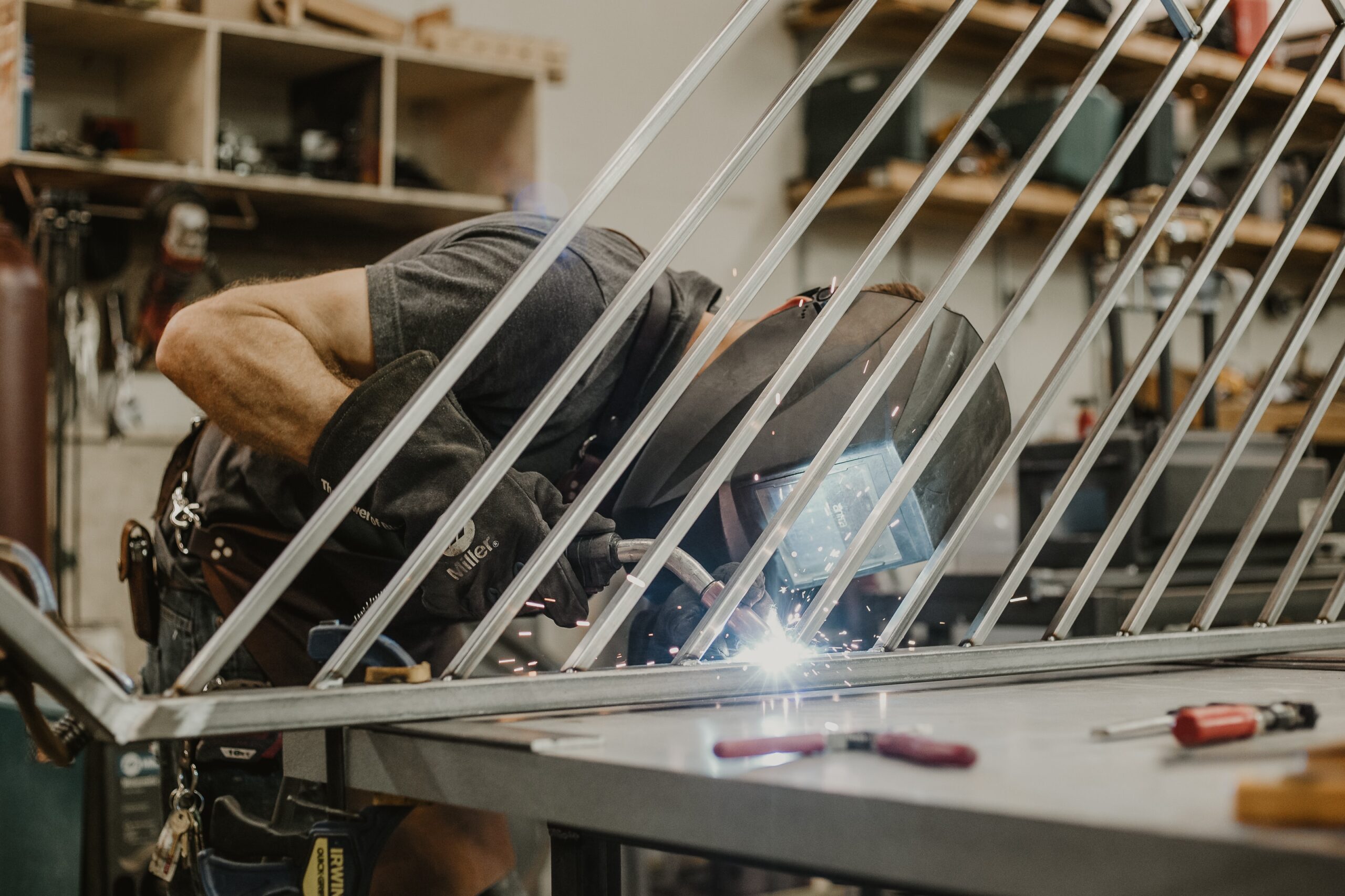Avoid welding failures with advice from Montana Mobile Welding and Repair Belgrade Fabrication
Wiki Article
Typical Welding Repair Service Issues and Exactly How to Address Them Efficiently
Welding fixings typically experience a series of problems that can endanger the integrity of the end product. Common troubles consist of insufficient infiltration, porosity, and imbalance, to name a few. Each defect offers distinct challenges that need details strategies for resolution. Understanding these concerns is essential for welders aiming to improve their end results and skills. This discussion will explore these usual welding repair issues and efficient approaches to address them.Inadequate Penetration
Insufficient infiltration takes place when the weld metal fails to completely fuse with the base product, causing weak joints and possible structural failures. This problem frequently originates from inadequate warmth input, incorrect electrode angle, or incorrect welding speed. Welders might come across inadequate infiltration due to a mistake of the needed specifications for a certain material thickness or kind. In addition, contamination on the base product's surface area can impede effective bonding, exacerbating the issue. To attend to insufficient penetration, welders should assure proper setups on their equipment and keep a tidy work surface. Normal assessment of welds is suggested to determine any kind of deficiencies early, enabling prompt corrections and the avoidance of endangered architectural stability in bonded settings up.Porosity
Porosity is an usual problem in welded joints that shows up as small gas bubbles entraped within the weld steel. This problem can jeopardize the honesty of the weld, leading to reduced toughness and prospective failure under anxiety. Montana Mobile Welding and Repair Belgrade Fabrication. Porosity commonly occurs from contamination, moisture, or incorrect welding strategies, which enable gases to leave into the liquified weld swimming pool. To deal with porosity, welders must ensure proper surface area prep work, preserve a tidy working environment, and make use of suitable welding criteria. In addition, picking the ideal filler product and shielding gas can minimize gas entrapment. Routine assessment and testing of welds can help determine porosity early, ensuring prompt restorative actions are taken, thereby preserving the quality and integrity of the bonded frameworkImbalance
Imbalance in welding can arise from various elements, including incorrect configuration and thermal expansion. Comprehending the origin creates is important for efficient resolution. A number of modification methods are offered to realign parts and ensure structural honesty.Reasons of Misalignment
Welding misalignment typically originates from a range of underlying problems that can compromise structural honesty. One primary reason is inappropriate fit-up of components before welding, which can result in spaces and unequal surfaces. Variants in thermal expansion during the welding procedure can additionally cause distortion, specifically if the materials being signed up with have various coefficients of development. In addition, poor fixturing and securing might fail to hold parts securely in position, causing movement throughout welding. Inadequately conserved equipment, consisting of welding makers and tools, might introduce disparities in the weld grain, additional contributing to misalignment. Driver error, stemming from not enough training or experience, can likewise play a substantial role in developing misaligned welds.
Improvement Techniques Available
Addressing misalignment effectively requires a combination of rehabilitative methods customized to the specific concerns at hand. One typical approach is using jigs or components to hold parts in the appropriate position throughout welding, ensuring constant positioning. Additionally, preheating the products can assist minimize distortion and boost fit-up. For significant misalignment, mechanical realignment methods, such as utilizing hydraulic jacks or clamps, can be employed to fix the placement before welding. Post-weld warmth therapy might also be necessary to eliminate stress and anxieties triggered by imbalance. Finally, mindful examination and modification throughout the setup stage can protect against imbalance concerns from ending up being substantial issues, promoting a smoother welding procedure and improving total architectural integrity.Distortion
Distortion is a common difficulty in welding that can arise from different variables, including unequal heating & cooling. Understanding the sources of distortion is vital for executing reliable avoidance techniques. Addressing this issue not just improves structural integrity yet likewise improves the general quality of the weld.Root causes of Distortion
When based on the extreme warm of welding, products frequently undertake changes that can lead to distortion. This sensation mostly arises from thermal expansion and contraction during the welding process. As the weld location heats up, the product increases; upon cooling, it acquires, which can develop inner stresses. Additionally, unequal heating throughout a workpiece can intensify these stress and anxieties, leading to warping or flexing. The type of product likewise plays a significant role; steels with varying thermal conductivity and coefficients of development may react in a different way, causing uncertain distortions. Bad joint layout and inadequate fixturing can add to imbalance throughout welding, increasing the likelihood of distortion. Comprehending these reasons is important for efficient welding repair and prevention methods.Avoidance Techniques
Effective avoidance techniques for distortion throughout welding focus on regulating warm input and making certain proper joint design. Keeping a regular warmth input aids to minimize thermal growth and contraction, which can cause distortion. Making use of strategies such as pre-heating the workpiece can likewise decrease the temperature level gradient, promoting consistent heating. Additionally, choosing ideal joint designs, such as T-joints or lap joints, can enhance stability and lower stress focus. Implementing correct fixturing to secure the workpieces in position further help in maintaining alignment throughout the welding procedure. Finally, staggered welding series can distribute heat more uniformly, preventing localized distortion. By using these approaches, welders can substantially reduce the likelihood of distortion and improve the total top quality of their welds.Breaking
Splitting is an usual issue run into in welding fixings, often resulting from different factors such as incorrect air conditioning prices, product option, or insufficient joint prep work. The incident of splits can considerably jeopardize the integrity of the weld, bring about possible failures during procedure. To resolve this issue, welders should first analyze the origin, ensuring that materials are compatible and appropriately picked for the particular application. In addition, controlling the cooling rate during the welding procedure is necessary; fast air conditioning can induce tension and lead to breaking. Appropriate joint style and preparation also add to decreasing the threat. Executing these approaches can boost weld quality and resilience, inevitably decreasing the possibility of breaking in completed weldments.
Incomplete Blend
A considerable concern in welding repairs is incomplete fusion, which occurs when the weld steel does not appropriately bond with the base product or previous weld passes - Belgrade Fabrication. This flaw can result in weak points in the joint, possibly compromising the honesty of the bonded structure. Aspects adding to insufficient fusion consist of co2 welding inadequate heat input, improper welding strategy, and contamination of the surfaces being signed up with. To resolve this issue effectively, welders must guarantee correct pre-weld cleaning and surface prep work, in addition to change their welding parameters to achieve ample penetration and blend. Routine assessment during the welding process can also help determine insufficient combination early, permitting timely restorative measures to improve the overall high quality of the weldOverheating
While welding fixings can enhance architectural stability, overheating provides a considerable obstacle that can cause product deterioration. Extreme warmth during welding can change the mechanical properties of metals, leading to decreased stamina, boosted brittleness, and warping. This sensation is specifically essential in high-stress applications where structural dependability is critical. Determining overheating can involve aesthetic evaluations for discoloration or distortion, in addition to monitoring temperature during the welding procedure. To minimize the dangers connected with overheating, welders should use proper strategies, such as regulating warmth input, changing traveling speed, and making use of suitable filler materials. Additionally, applying pre- and post-weld heat therapies can help recover material properties and boost the general quality of the repair, making certain long-lasting efficiency and safety and security.Often Asked Concerns
What Are the Usual Signs of a Welding Issue?

Exactly How Can I Test My Welds for Quality?
To test welds for top quality, one can use visual evaluations, ultrasonic screening, and radiographic methods. Each method guarantees architectural integrity, determines flaws, and verifies adherence to specified standards, ultimately improving the integrity of the welded joints.What Security Precautions Should I Take While Welding?
When welding, one should focus on security by putting on suitable individual protective equipment, guaranteeing correct ventilation, protecting flammable products away, preserving tombstone welder a clean work space, and recognizing surroundings to stop accidents and injuries.Can I Repair a Weld Without Redoing the Entire Joint?
Fixing a weld without renovating the entire joint is possible, relying on the damage (Montana Mobile Welding and Repair Fabrication). Methods such as grinding, including filler product, or using a welding process can successfully resolve details defects while preserving the bordering structureWhat Tools Are Crucial for Effective Welding Repair Works?
Important devices for effective welding repair services include a welding equipment, wire brush, grinder, safety equipment, clamps, and filler materials. Each tool plays a crucial role in ensuring quality and safety and security during the repair work procedure. Porosity usually occurs from contamination, dampness, or inappropriate welding strategies, which enable gases to run away right into the liquified weld swimming pool. Poorly kept tools, including welding devices and tools, might present inconsistencies in the weld bead, further adding to misalignment. When subjected to the intense warmth of welding, materials usually go through changes that can lead to distortion. Splitting is an usual issue encountered in welding fixings, typically resulting from numerous elements such as improper air conditioning rates, product choice, or inadequate joint preparation. A substantial concern in welding repair services is insufficient fusion, which takes place when the blog here weld metal does not adequately bond with the base product or previous weld passes.Report this wiki page